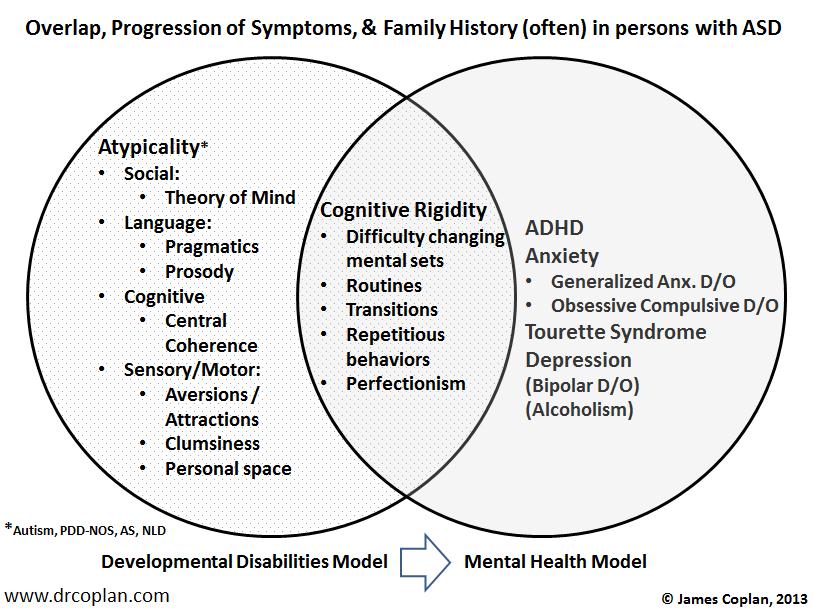Mental Health in ASD – 01
In the last few posts I laid out a 3D picture of ASD that integrates degree of atypicality, level of general intelligence, and age (or Time). In this model, we can think of atypicality as a chunk of ice floating in the water. The size of the chunk of ice corresponds to the degree of atypicality, and the water temperature corresponds to the IQ. Just as in the real world, the warmer the water (i.e. the higher the IQ) the faster the “ice” (atypicality) melts over time.
.
Children who start out with moderate to mild atypicality combined with normal IQ, shed many of the outwardly visible features of ASD during childhood: Eye contact and language improve, while social isolation, stereotypies and sensory issues diminish. As adults, some of these individuals no longer meet the behavioral criteria for ASD.
.
Even though the outwardly defining features of ASD (stereotypies, echolalia, etc.) have faded, however, these individuals continue to manifest the cognitive profile of persons on the spectrum: relative weakness in skills tapping “theory of mind” and “central coherence,” which translate into persistent difficulty understanding social signals or seeing the “big picture.”
.
These individuals also are at risk for neuropsychiatric disorders (anxiety, depression, mood disorders, OCD), all of which tend to run in families of individuals with ASD. Thus, even though a child may gradually “outgrow” his or her ASD diagnosis, the child may simultaneously “grow into” an anxiety disorder, depression, or a mood disorder. As you might expect, there are lots of individuals who manifest persistent features of ASD, plus neuropsychiatric impairment. It’s not a matter of “either/or,” but “both/and.”
.

The circle on the left includes all of the standard features of Autism Spectrum Disorder. When children are very young, a Developmental Disabilities model is the best way to approach the problem (for example, getting the child to give eye contact, speak, and reciprocate social bids). As the child gets older, the atypical features tend to improve. At the same time, however, behavioral and emotional issues such as anxiety tend to become more evident, and in the long run these are the most challenging issues facing adults with ASD (even adults who have “recovered” from ASD using narrow behavioral criteria). “Cognitive Rigidity” lies in the overlap zone between Atypicality (on the left) and Neuropsychiatric Disorders (on the right), and is evident in both.
.
A wealth of services are now in place for children with ASD. Unfortunately, there is a gaping hole in the safety net when we get to older children and adults – especially those who are “high functioning,” and outwardly appear to be “doing well.”
.
More on this the next time.













Leave a Reply